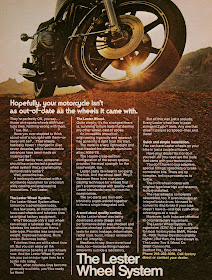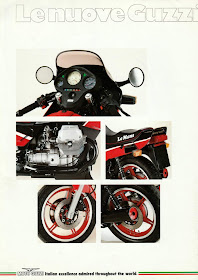Tuesday, December 31, 2019
Columbia Six Sport
Columbia was a Detroit automobile company that started building cars in 1916. it was a short run, even posing their cars with bathing beauties wasn't enough to save them from going out of business in 1924.
Monday, December 30, 2019
T. Cooke Lathe
Double Eccentric
Elliptical
Eccentric
Index Head
Planer Slide
Roadless Traction airport tug
 |
| Roadless County & Other Conversions, Allan T.Condie Publications, Nuneaton |
Here's a tracked conversion of a Fordson tractor built by the Roadless Traction company, posing for the camera.
Roadless was started after WW1 by Colonel Philip Johnson who had worked on tanks and tracked vehicles during the war. Till the company went broke in 1983, the company built tracked vehicles, half tracks and later 4WD conversions from production tractors, mostly Fords and Fordsons. Another post here.
The aircraft is a Handley Page H.P.24 operated by Imperial Airways. Four were built, and a further four of the shorter-range H.P.45 variant. They first flew in 1930 and were in passenger service till the remaining seven became part of the RAF at the beginning of the war. During 1940 all were lost to accidents in various locations, three of them to galeforce winds while the aircraft were on the ground! Previous post here.
Sunday, December 29, 2019
Effecto Paint
Saturday, December 28, 2019
We used to make things in this country, #310, Corvettes
The corvette HMCS Moose Jaw (named after the city in Saskatchewan) is launched at the Collingwood, Ontario shipyards in April of 1941. The ship was commissioned in June 1941 and on its first training mission it participated in the first U boat sinking by the Royal Canadian Navy. The Moose Jaw served on Atlantic convoy escort duty for most of the war both across the Atlantic and from England to Gibraltar.
After the war the ship was retired and it was scrapped in 1949.
More history here.
Friday, December 27, 2019
Lester cast wheels
His son Thomas learned the trade early in his father's shop and these skills had him working with NACA in turbine engine development during WW2. After the war he started the Lester Casting company in Cleveland. By the 1960s the company was doing well and along with some friends, he started manufacturing tires for antique cars under the name Lincoln Highway Tire. The company grew, becoming the Lester Tire company. His main business though was still die casting with an emphasis on innovation and on January 14, 1976, a patent was filed by Thomas Lester for cast motorcycle wheels. On September 13, 1977, United States Patent 4047764 was issued for "Composite motorcycle wheel construction" described as follows.
"Lightweight composite motorcycle wheel construction characterized in that it comprises a wheel unit casting including concentric outer and inner rim and sleeve portions integrally connected together by angularly spaced spokes; and a hub unit casting having an interference fit within the bore of the sleeve portion thus to frictionally retain the hub and wheel units together against relative angular and axial movement while the bearing receiving bore in the hub unit is located and held coaxially of said rim portion, the wheel and hub units additionally being welded together to prevent relative angular and axial movement despite application of torque and axial loads exceeding the frictional resistance of the interference fit."
The Lester Casting Company was sold to ITT in 1980 and Thomas Lester retired from the casting business, remaining active in other vehicle-related ventures. He passed away in 2005.
From a much more detailed history at Bradshaw Bikes on Facebook.
The Lester Casting Company was sold to ITT in 1980 and Thomas Lester retired from the casting business, remaining active in other vehicle-related ventures. He passed away in 2005.
From a much more detailed history at Bradshaw Bikes on Facebook.
Thursday, December 26, 2019
Rochester trolley buses
Twelve of these buses (or cars as they were called) were in use in Rochester between 1923 and 1932. They were a bit unusual in that chassis were built by Brockway in Cortland, NY and the bodies installed by Kuhlman in Cleveland. Also, they could be ordered with either a gasoline engine or as an electric (trackless trolley). Seven of Rochester's units were originally gas powered but by 1928 had been converted to trackless trolley cars. By 1932, they were obsolete, all twelve of the solid-rubber tired vehicles were retired in March of that year.
1925 Alfa 22/90
 |
| Cyril Posthumus, Vintage Cars, Hamlin, 1973 |
Below the P2 Grand Prix car that led to the 22/90.
 |
| supercars.net |
Suzuki GN 400 rescue
A couple of years ago, while attending an urban lawn sale, the questions were asked, do you have any junk bicycles? accordions? motorcycles? No, no, uhhhh.... yes. There was an abandoned Suzuki customizing project that his son had given up on more than a decade before, pushed into the bushes in the backyard.
Turns out it was a lowly 1982 Suzuki GN400. Not known as one of Suzuki's best efforts, it was a single cylinder, custom styled kickstart-only learner bike. They were cheap but are found with low mileage as the knack of kickstarting a 400cc 4 stroke single does not come easy. We rescued it. After just cleaning the carb, surprisingly, it started and ran pretty well.
The chopper look had to go. Rummaging around the junk, I found a set of shorter T500 forks (same diameter), a GT250 front wheel and a rough XR750 seat/tail. Reorienting the tank mounts fixed the "uphill" look. Some yellow paint.... hmmm... getting there.... some cheap ebay shocks raised the rear...
We flirted with returning it to the road, but we need an ice bike so after an unsuccessful search for an 18" rear wheel, a 16" knobby was acquired and the tires studded up.
Cost so far. shocks $80, tires $100, box of studs $150. Total is under $350. We rode it around and around turning left till we couldn't lift our foot.
It works. Now the tweaking begins.
Wednesday, December 25, 2019
Grenoble 1949
A poster by an artist known only "Gielly" for the motorcycle races held at Grenoble, France in 1949.
Toyville at Eatons
During the first half of the 20th Century, Eatons was the biggest department store chain in Canada. They went all out at Christmas, the toy department was magical, with Santa Claus presiding over all the toys and Christmas displays. The store in Montreal even had a train ride for the kids, an electric 1/6 scale replica of the Canadian Pacific Jubilee class locomotive pulling 4 cars running on an oval track through enchanted forest scenery. Sensory overload for the kids!
The train had been built by the CPR shops and was first installed for the Christmas season of 1936, running for the next few Christmas seasons. During the war years the program was cancelled for austerity reasons.
According to the CPR internal newsletter, the train was refurbished during the summer of 1945 and resumed service for the Christmas season, more popular than ever.
Meanwhile the CNR had built their own version for the Toronto Eatons store at their Pointe Saint Charles shops. This one was a 1/5 scale replica of CNs flagship, the 6400 Northern class. It was a big deal, 10,000 people came to see the train demonstrated at the railway shops before it was delivered and set up at the Toronto Eatons store, where it also proved enormously popular.
Eatons could see a good thing when they had it and for 1946 commissioned an additional train for the western provinces. This was a 1/6 scale replica of the new Royal Hudson. This setup travelled between Winnipeg, Regina and Calgary stores.
All three trains brought a lot of publicity to Eatons and the railways over the years. By the early sixties, diesels had replaced steam, suburban shopping centers were taking traffic and sales from the downtown flagship stores so the trains were discontinued. The Jubilee model was scrapped, but the other two have been preserved. The whole story here.
Tuesday, December 24, 2019
Monday, December 23, 2019
Sunday, December 22, 2019
Speed-Kop Whistles
A whole box of whistles! Postwar plastic toys made by Commonwealth Plastics of Massachusetts.
More on the company here.














































